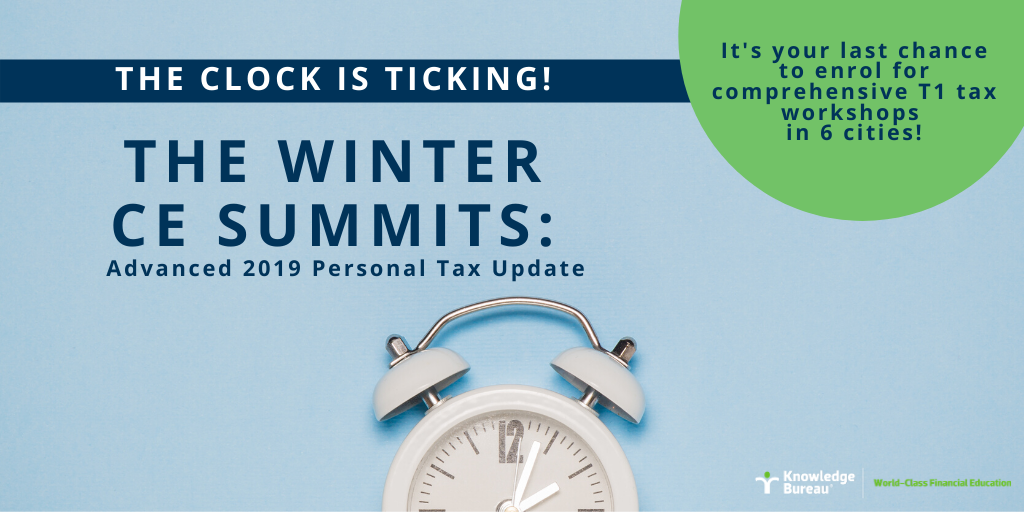Break It Off: Your Relationship with the Tax Collector

Evelyn Jacks
It can be very expensive to owe money to the CRA and it’s the one debt that must be given priority over others. That’s because CRA has significant powers to enforce payment of taxes, levy penalties and interest, which includes garnishment of wages and seizure of assets. This can obviously impact other financial obligations, so here is what you need to know to break up with the tax collector.
First, CRA is well-armed with significant new funding to enforce and collect taxes. And it is on a mission to encourage delinquent taxpayers to pay earlier. CRA will also work with taxpayers who cannot pay the full amounts owing when they become due, so don’t hesitate to work out terms of payment over time. Remember, it is folly to expect the collections department to go away. The CRA’s goals for collections by the end of each fiscal year are aggressive:
- March 2019 – $3 billion in tax debt, plus $210 million from high-risk reassessments
- March 2020 – $5 billion in tax debt, plus $280 million from high-risk reassessments
- March 2021 – $7 billion in tax debt, plus $350 million from high-risk reassessments
Collections periods. According to CRA’s website, each tax debt has a 6- or 10-year collections limitation period. The limitation period can be restarted or extended when certain events occur. When these events occur, the total amount of time that the CRA has to collect the debt can in fact be longer than those 6 or 10 years. Worse, even after the collections limitation period ends, a taxpayer can still have a tax debt. Interest will continue to accrue until the tax debt is paid in full.
If you are a tax advisor who works with a delinquent taxpayer, here are the rules to discuss:
|
Types of tax debt
|
Collection limitation period (CLP) start date and duration
|
The CRA starts collection action
|
|
Individual
|
The CLP starts on the 91st day after a notice of assessment or reassessment is sent. 10-year CLP applies – The CLP can be restarted and extended.
|
This type of tax debt is subject to a 90-day collection restriction for the period after a notice of assessment or reassessment is sent. The CRA can start collection action on the 91st day, unless a notice of objection or appeal is filed.
|
|
Corporation
|
The CLP starts on the 91st day after a notice of assessment or reassessment is sent. 10-year CLP applies – The CLP can be restarted and extended.
|
This type of tax debt is subject to a 90-day collection restriction for the period after a notice of assessment or reassessment is sent. The CRA can start collection action on the 91st day, unless a notice of objection or appeal is filed.
|
|
Payroll deductions
|
The CLP starts the day after a notice of assessment is sent. 6-year CLP applies – The CLP can be restarted and extended.
|
This type of tax debt is not subject to collection restrictions. The CRA can start collection action as soon as a notice of assessment is sent. If a notice of objection or appeal is filed, the CRA can continue to collect the debt.
|
|
GST/HST
|
The CLP starts the day after a notice of assessment is sent. 10-year CLP applies – The CLP can be restarted and extended.
|
This type of tax debt is not subject to collection restrictions. The CRA can start collection action as soon as a notice of assessment is sent. If a notice of objection or appeal is filed, the CRA can continue to collect the debt.
|
Be Proactive. Appealing Notices of Assessment or Reassessment is an important defence if the client does not believe the amounts owing are correct. For tax debts subject to collection restrictions, the CRA cannot start collection action:
- during the 90 days after a notice of assessment or reassessment is sent
- during the time that you dispute your debt by filing a notice of objection or appeal
However, if the CRA determines that it might not be able to collect a tax debt because of collection restrictions, it can apply to the Federal Court (Canada) for a jeopardy order. If granted, this  order will let the CRA take collection action immediately.
order will let the CRA take collection action immediately.
Restart of the collections limitation period. The limitation period is restarted when either you or the CRA takes certain actions. Tax debts subject to the 6-year limitation period are restarted for another 6 years and tax debts subject to the 10-year limitation are restarted for another 10 years.
The moral of the story? Don’t be an ostrich – get some help with your tax debt to start on a more positive financial footing for 2020.
Excerpted from the Winter 2020 CE Summit Knowledge Journal. Don’t miss the tour – there is still time to enrol with limited seating in Winnipeg, Toronto, Ottawa, Calgary, Edmonton and Vancouver.
Next week: The Voluntary Disclosure Program and taxpayer recourse options with the CRA.
Additional educational resources: Winter CE Summits – sign up today!
COPYRIGHT OWNED BY KNOWLEDGE BUREAU INC., 2020.
UNAUTHORIZED REPRODUCTION, IN WHOLE OR IN PART, IS PROHIBITED.